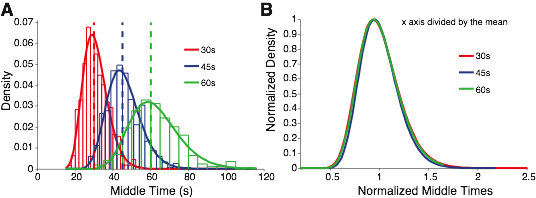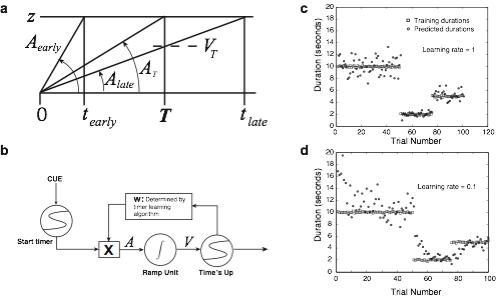-
•How do we suddenly know that some ordinary sound in our environment – say, the sound of a microwave oven in operation – has gone on longer than it should? (In the case of a microwave, this could indicate that a dangerous fire will soon erupt!)
-
•More generally, how is it that we can have uncanny sensations about the timing of events in our environment that were not previously the focus of our conscious attention?
-
•More prosaically, how do rats learn when to press a lever to get a food-pellet, when it is critical that they not press the lever too early (as in the differential reinforcement of low rates of reward paradigm)?
Keeping track of time is in many ways the most essential cognitive task we undertake, and it appears that we and other animals are constantly doing it (at least subconsciously), whether we use watches, clocks or any other external aid. While circadian rhythms may aid timing over periods of multiple hours and days, the timing of durations in the subsecond to multiple seconds range also clearly plays a fundamental role in cognition. For example, subsecond timing may be needed to determine whether a decision process should be terminated, even if the desired amount of evidence about what to choose has not been gathered. Furthermore, response time and accuracy data from both animal and human participants in many decision making tasks suggest processes at work that accurately time the intervals between task events, such as a fixed warning period between a cue to get ready and a cue to respond. Finally, the time between cues and rewards has been found to be a key variable in the process of learning from reinforcement in conditioning experiments and in the dynamics of neural activity in reward anticipation.
If it is true that a single model should be able to unite theories of conditioning and psychophysics, then it should also be possible to unite these theories with a theory of subsecond to multiple second interval timing. I am investigating the possibility that the brain’s timers may essentially consist of a suite of drift-diffusion processes. A number of predictions flow from this hypothesis, including behavioral predictions regarding response times in temporal decision making tasks. I and my colleagues (Simen, Balci, deSouza, Cohen & Holmes, in press) have shown that a drift-diffusion process, arising from the noisy, Poisson-like firing rates of neural populations, can account for the well-known law of scalar invariance in interval timing (Gibbon, 1977). It also successfully predicts that interval timing responses in peak-interval tasks are distributed as inverse Gaussian, or Wald, distributions, with skewness equal to three times the coefficient of variation (standard deviation divided by mean). Finally, it successfully predicts that the learning of durations can occur in one shot: from a single exposure to an interval, maximal prediction accuracy and precision can be achieved. We are continuing to investigate this model’s ability to explain data in tasks in which time is the most important independent variable: e.g., intertemporal choice, the time-left task, interval bisection and temporal generalization.





